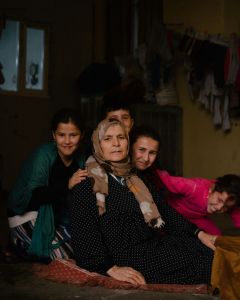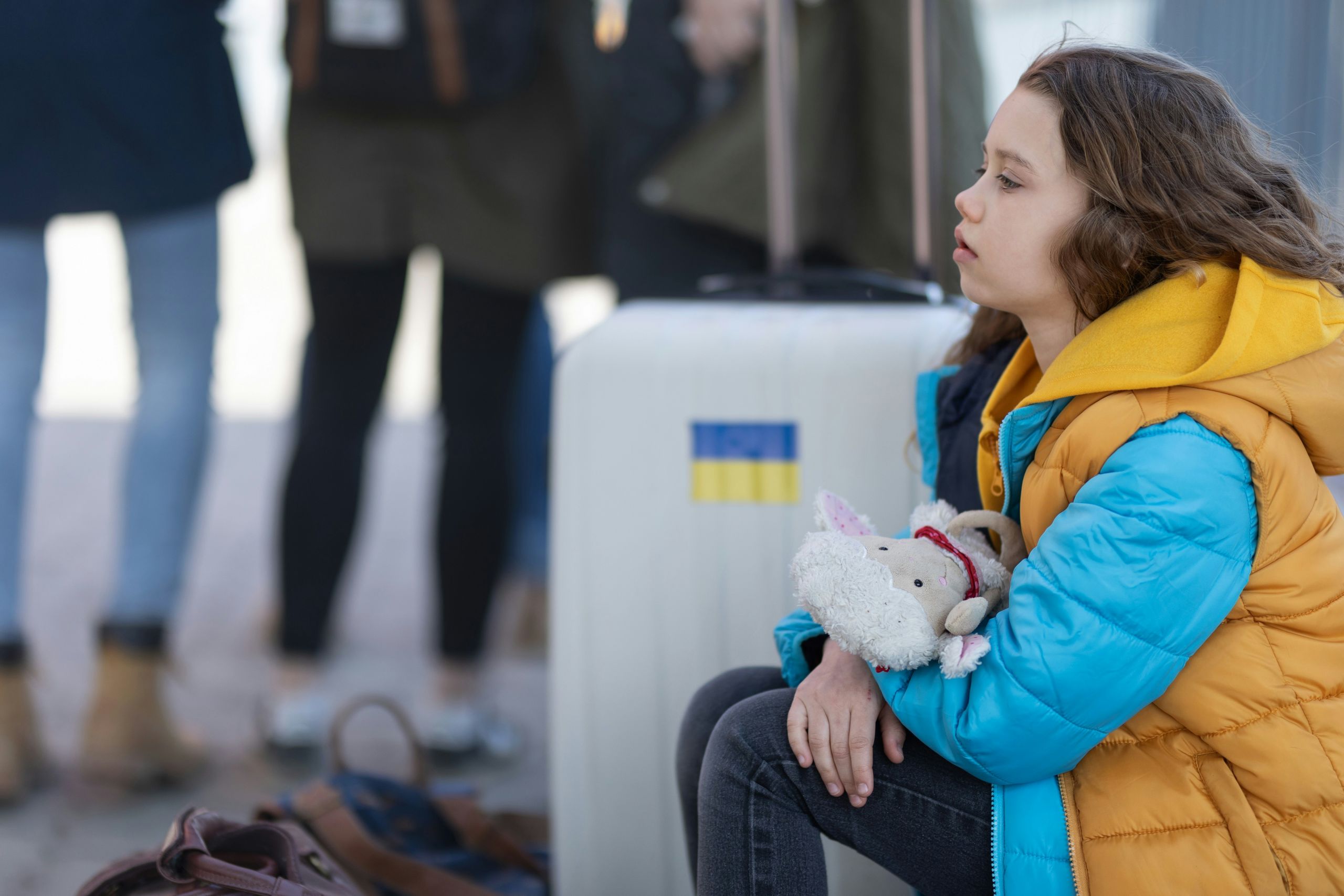The numbers are staggering. As of mid-2023, there were 30.5 million refugees worldwide. According to the United Nations High Commission on Refugees, the average refugee spends 20 years in exile before returning home or resettling in a new home. Indiana is home to 28,000 resettled refugees, most of whom come from Afghanistan, Democratic Republic of the Congo, Somalia, Haiti, Sudan, and Syria. The numbers are so staggering, in fact, it is easy to forget there are actual human lives behind these statistics.
Amina’s father worked as an Afghan driver for United States military personnel stationed near Kabul. When the U.S. pulled out of the country in 2021, her father’s assistance to the American army put him on the Taliban’s wanted list. Amina’s immediate family received visas and moved to the United States. Amina received little schooling in Afghanistan and struggles to catch up academically now as she suffers ongoing effects from the traumas she and her family experienced. Her parents are grateful to be in a country where girls can receive an education, but they feel unsure how to support her in school since neither of them received any education in Afghanistan during the Taliban’s rule.
Nadine’s family moved to the United States in December 2019 after living more than 20 years in a Tanzanian refugee camp. Moving here right before the pandemic meant that Nadine spent much of her first two years of English education online or in a mask. Today, Nadine is an 8th grade honor student. As the oldest daughter, she spends her evenings caring for her five younger siblings while her parents work overnight shifts in a warehouse. She translates for her parents and helps them navigate the English required to understand health care, banking, and bills.
Ibrahim’s father was a middle-class shoe maker in Syria just as his father before him. After the Syrian civil war began in 2011, Ibrahim (a toddler at the time), along with his parents and three siblings, fled on foot to Turkey, where they lived as displaced people for five years before being relocated to the United States. Ibrahim began American school in third grade, and his family has spent the last several years fighting to bring their extended family to safety in America. Although Ibrahim’s family values education highly, they are unable to help him much with school work due to the language barrier and lack of familiarity with the American education system.
As more students from the refugee community settle in Indiana schools, students like Amina, Nadine, and Ibrahim arrive in classrooms ready to learn but carrying heavy burdens from their refugee experience.
Understanding the asylum-seeking and refugee resettlement process can give teachers a fuller picture of the lived experience of these students and their families, allowing teachers to support them better.
“Understanding the asylum-seeking and refugee resettlement process can give teachers a fuller picture of the lived experience of these students and their families, allowing teachers to support them better.”
The process of becoming refugees is long and is always rooted in traumatic experience. Before reaching the United States, most refugees have fled war, spent years in refugee camps, undergone intense background checks and vetting processes, been assigned to a new country, and finally relocated to that new country – – all while processing years of trauma.

By definition, refugees are people who have been displaced from their homelands and are unable or unwilling to return home due to a well-founded fear of persecution. They flee their homelands due to war or religious or political persecution.
When asylum seekers leave their homes, the process to be declared refugees by the United Nations High Commission on Refugees (UNHCR) is long and thorough. While awaiting a decision by the UNHCR, people live in refugee camps with tens of thousands of other displaced people. Cox’s Bazar, the largest refugee camp in the world today, is home to 931,960 Rohingya refugees who fled Myanmar’s repressive government. This camp has one bathroom for every 50 people.
While in refugee camps, people wait for months or years to see if it will be safe to return home or if they will be relocated. If they apply for refugee status and desire to be relocated, the United Nations and the U.S. Government thoroughly scrutinize each person’s asylum story and family background. They check each person’s health and check for any past crimes. In the end, less than 1% of refugees will be resettled in a new home country.
Once a refugee is accepted into the United States, they may arrive thinking that the streets will be paved with gold and the American Dream will be within arm’s reach. The reality, however, is a complicated maze of learning English, finding affordable housing, securing jobs, obtaining reliable transportation, and raising their children in a culture completely unknown to them.
When the children enroll in school, the unfamiliar environment, combined with the trauma of their pasts and the uncertainty of their futures can be crippling. Teachers who are prepared to support students from the refugee community can make the difference as students try to discern whether they can succeed in America. These students often have untapped potential that can be unleashed in a classroom where they feel safe and valued.
Teachers who welcome students warmly provide a sense of safety for students. A teacher’s curiosity about student’s home cultures conveys respect for their lives before becoming refugees. Taking a strengths-based approach toward the students can empower them with confidence. Teachers who are aware of the effects trauma can have on a child’s physical and mental health will be more understanding of students’ ups and downs. When teachers are aware of the complicated circumstances that refugee families face, they will recognize a student’s school work may not reflect a student’s full potential.
“When teachers are aware of the complicated circumstances that refugee families face, they will recognize a student’s school work may not reflect a student’s full potential.”
As with every child in America, teachers play a vital role with the newest generation of Americans who find refuge in our country. By welcoming them, seeing them, understanding them and encouraging them, teachers help students like Amina, Nadine and Ibrahim flourish in America.
- “The 10 largest refugee crises to know in 2024.” Concern Worldwide, 15 December 2023, https://concernusa.org/news/largest-refugee-crises/. Accessed 21 February 2024.
- United Nations High Commission on Refugees. “Introduction.” UNHCR, https://www.unhcr.org/us/introduction. Accessed 21 February 2024.
- Indiana University. Researchers offer solutions to refugee resettlement barriers. 23 08 2022. Indiana University Public Policy Institute, Indiana University, https://policyinstitute.iu.edu/news-media/stories/refugee-resettlement-brief.html.
- “UNHCR master glossary of terms.” UNHCR, United Nations, https://www.unhcr.org/glossary. Accessed 21 February 2024.
- Hussein, Mohammed, and Hanna Duggal. “What is life like inside the world’s largest refugee camp?” Al Jazeera, 25 August 2023, https://www.aljazeera.com/news/longform/2023/8/25/what-is-life-like-inside-the-worlds-largest-refugee-camp. Accessed 21 February 2024.
- “Refugees in America.” International Rescue Committee, International Rescue Committee, https://www.rescue.org/topic/refugees-america. Accessed 21 February 2024.
Please login or register to claim PGPs.
Alternatively, you may use the PGP Request Form if you prefer to not register an account.



